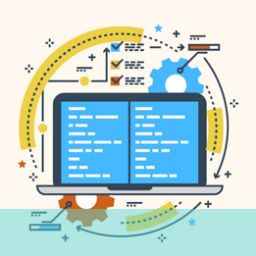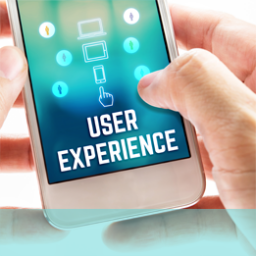
What is Anticipatory Design?
Anticipatory Design is a UX design principle that is one step ahead of the user. It uses artificial intelligence to collect data on user habits and preferences with an interface. This data is then leveraged to asses, predict and answer user needs ahead of time.
Its goal is to reduce users cognitive load by making decisions on their behalf, creating an ecosystem where decisions are never made and happen automatically without any input from the user.
Some popular use cases of this are seen with well-known brands such as Netflix (where films/TV shows are recommended to you based on your viewing habits) and Amazon (where products are suggested to you based on what you have bought previously). Spotify has also released a feature that creates a playlist for you based on past listens and preferences.
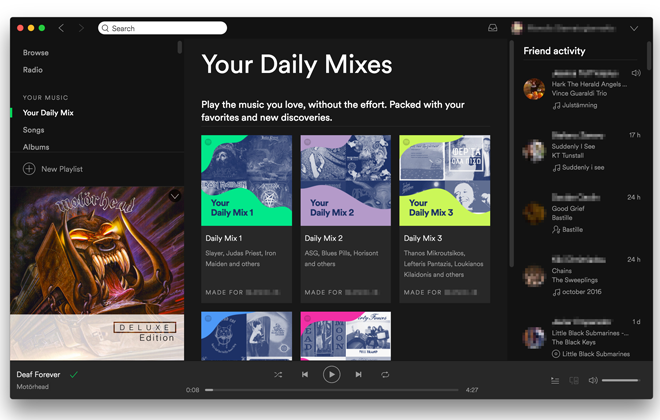
Real World Examples of Anticipatory Design
E-commerce: Cook With M&S
This app provides users with a range of recipes (alongside beautiful photography and compelling copy), the app adds value by allowing visitors not only to read the recipe, but also create an editable shopping list of ingredients to purchase from their shop, which adjusts automatically according to how many people you are serving.

Home Technology : Nest
‘Nest’ is a smart thermostat that learns the heating/cooling habits in the users’ home and automatically adjusts the temperature according to their preferences.

Online : Google Now
Google Now is an intelligent personal assistant developed by Google. It collects user data and it can display cards with personalized, location-aware information, such as calendar events, local weather, news, stock prices, flights, boarding passes, hotel’s, photo spots nearby, and more. It can also tell the user how long it will take you to get home from work, based on current traffic conditions. If Google doesn’t think you need something at the moment, it won’t be displayed.
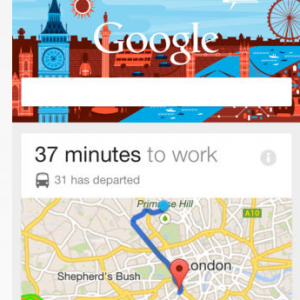
The Benefits of Anticipatory Design
- Reduces Cognitive Load – Cognitive load is the mental effort needed by a user to do something. Anticipatory design decreases this effort by reducing or in some cases eliminating the number of decisions the user has to make. The less users have to think about what they need to do to achieve their goal, the more likely it is they will want to achieve it.
- Simplified User Interfaces – Fewer choices available on screen means that interfaces can be designed to be, cleaner with less clutter. This should make online user experiences more intuitive.
- Time Saving – Anticipatory Design ensures that users can find what they need or make decisions faster, saving them time and allowing them to do more.
- Increase Conversions – Personalized product recommendations on e-commerce sites provide opportunities for sales and in turn create more revenue for organisations
Potential Problems with Anticipatory Design
- Privacy – The biggest ethical concern surrounding anticipatory design is over data security and privacy. This is due to the fact that a lot of very personal data (e.g. online profiles, messaging and location) is required from users and access to this data may concern some users. User data should be protected and not used in an invasive manner.
- Restrictions – Algorithms can create a loop of events, actions and activities that can trap users and limit them from discovering new experiences. This has been termed the ‘Experience Bubble’. This can be more of a concern with children who are more easily persuaded.
- Loss of Control – Users have less control over what they see. Some users may not want this and so being transparent and providing users with the option to opt out of pre-made decisions may be necessary in some cases.
- Bad Decisions – Human actions are not always predictable. Making a wrong decision for the user can negatively impact user experience which can impact an organisations reputation.
Designing Anticipatory Experiences
Implementing anticipatory design into your product or service requires a combination of machine learning ,data collection and good user experience design.
The advice from Aaron Shapiro, CEO at digital agency Huge and the creator of the term anticipatory design consists of 5 things he feels organisations should keep in mind when thinking about designing anticipated experiences;
- Think of your brand as a service: What does it enable its users to do?
- Enable your service digitally
- Assess what you can do to automate the delivery of your service.
- Establish your automated service
- Draw a line between what is acceptable decision making and what isn’t.
Once your anticipatory service has been created the following advice can help to optimise your offering.
- Look to add value to an interaction through automation
- The context of where automation is offered is key, not just the content
- Putting in place a contingency when wrong decisions are made can minimise the loss to you and your consumers.
- Give users some control over what they want to see, implement a feedback mechanism to gain user opinions.
- Work to establish trust with your users. The users should feel as though they are benefiting from giving away their personal data.
- Continuously analyse and asses the data collected to help to minimise errors.
- Carry out user research and testing. Observe what users are inclined to do along the user journey and design the interactions accordingly. Combining this with data mining creates fluid anticipatory experiences.
If you would like to discuss how to test your application contact us on +44(0)800 024624 or email us at hello@ux247.com.
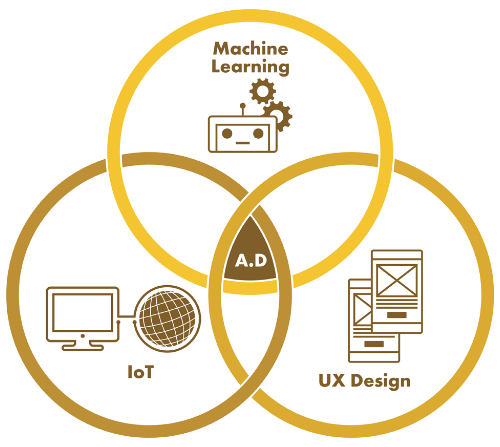
Anticipatory Design is a design pattern within the field of predicative user experiences. It is formed around 3 elements;
- Machine Learning – allows devices to learn from users past behaviours and use it to adjust anticipate on.
- The Internet of things (IoT) – the means of and the context in which anticipatory design operates and is executed in.
- User Experience Design – is crucial to deliver seamless anticipating experiences
The development of these new and smarter technologies means that the skills required of UX designers is changing. Anticipatory design is resulting in UX designers getting more involved in areas such as ethical design since a lot of personal data is involved in predictive experiences.
Other forms of user interfaces (e.g. voice interfaces such as Googles’ Alexa) have presented different ways of designing thinking based around personas and conversation design.
A step further from this is being developed in the form of gesture based interactions, requiring even more effortless user inputs.
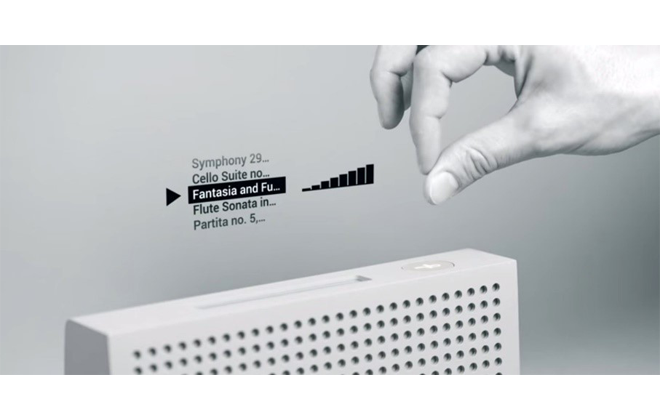
As anticipatory design forges ahead, where can or should it go next?
We have so much to glean from the provision of simpler choices, better anticipation of our needs, and smarter tools designed to save us time, money—and even better—from stress and frustration.
But what does that mean for the consumers and designers hoping to strike the perfect provision of seamless suggestibility?
Too much choice can indeed be frustrating, yet limiting our choices isn’t always the best bet for a healthy existence either.
Will ML and AI create algorithms that detect when we’re ready for a change?
Let’s go back to Netflix; it’s great that its algorithms help find us more of what we like, but what if you really want or need a change? Familiarity can become, well, too familiar and just a little bit dull. What if you get bored of action movies and fantasy TV series? What if the same type of shows and movies look boring, and there are no standout alternatives to your typical tastes because Netflix has decided for you that they’re just not your cup of tea?
Admittedly, Netflix catalogues are vast enough so that its choices always seem to offer up something we can watch. But out of the thousand options it’s picking from, can it really detect the top choices you’d pick out if you put your brain directly in competition with its algorithms?
“Netflix: show me something I’d never usually watch.”
Should they introduce an option to turn your entire catalogue on its head or to replicate that of a friend or family member’s catalogue, one that features masses of titles you’d love to see yet have never come up in your selection?
What about telling it what mood you’re in and having it decide the right shows and movies sympathetically or empathically? Just like your friends would because they know you and your tastes on an emotional level?
Do we need feedback loops to define when a change in routine is necessary?
SKY Q, the provider’s most hi-tech control system to date, includes many of the automatic decisions discussed, pulling up programs you regularly watch, reminding you of your recordings, automatically recording or downloading future episodes of the programs you’ve chosen, and even a voice-controlled option pushing you to ask, “What should I watch?” that delivers what, indeed, it thinks you’d like to watch.
Wouldn’t it be enlightening if its algorithm delivered, “You’ve never shown any interest in romcoms, reality TV or sport; would you like to give them a try?”
We’re emotional beings—they’re the robots
Will the time come when Sky develops a ‘surprise me’ option to counter their ‘what should I watch’ function, or if we could share more data safely—instead of worrying whose hands it ends up in—have a ‘what are my friends watching’ option?
I would guess that Facebook already has all that information ready to go, with users posting activity- and feeling-based posts outlining everything from what we’re watching to where we’re eating, what events we’ve been to, thought about going to, did and didn’t enjoy, and whether we’re happy, sad, angry or excited to be doing those things. That’s a lot of information; how much better could our suggestions be with a broader range playing field?
How efficient will AI and ML become, and will they ever be as predictably unpredictable as their human subjects?
Without question, so much of what AI and ML provide is a gift. Brilliantly thought-through, efficient, time-saving actions, efficiently designed, so we don’t even notice the time they’ve just saved us. It will only advance and improve in time; we’re in the hands of the programmers and designers who are heading the field of this journey.
How far can AI and ML take us? Only time will tell how efficient the learning algorithms are that develop the processes usually formed off the back of invention and inquisitive nature of a sentient human.
Watch this space—or let your phone watch it for you; I’m sure it’ll let you know the results when it thinks you’d be interested to hear them.




